Future Lp(a) Treatment Options

An elevated Lp(a) is the most common genetic cholesterol disorder impacting 10-20% of the population.
It is easily tested for with a simple blood test, but unfortunately, this is rarely done.
Everyone should have an Lp(a) blood test at least once, but this is an absolutely must-do test if you have an early family history of heart disease.
The defect is not actually with the cholesterol transported in the lipoprotein particle but with alterations to a protein tail and its configuration called Kringle repeats.
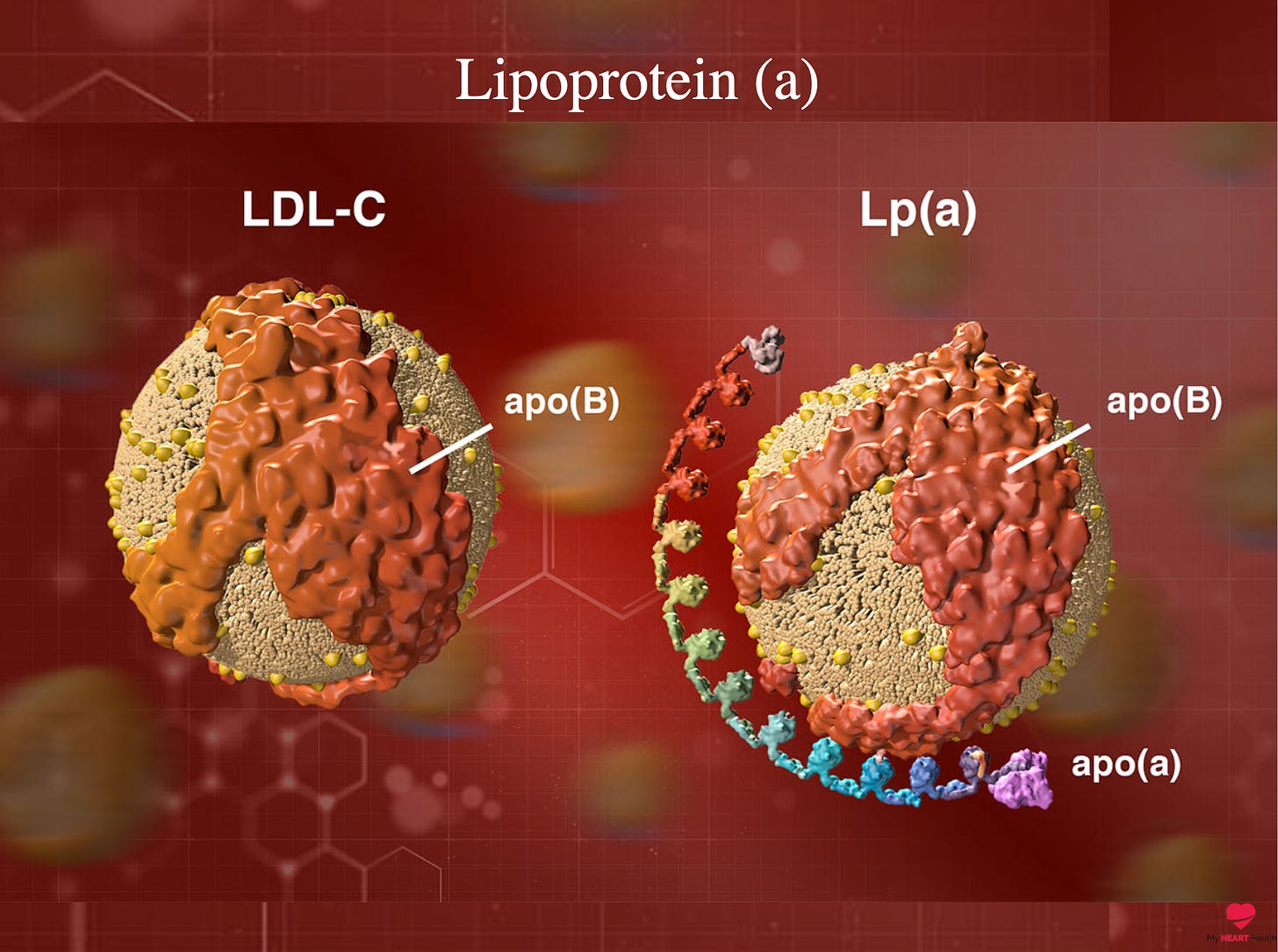
An elevated Lp(a) is independently and causally related to early:
-
Coronary artery disease
-
Stroke
-
Peripheral Vascular Disease
-
Aortic Stenosis
For a more comprehensive review of what Lp(a) is and why it matters, I have covered this in much more detail here.
The big challenge for those with an elevated Lp(a) is that there is no currently approved therapy to target Lp(a) specifically.
However, that does not mean you cannot reduce the overall risk of early heart disease.
This distinction is crucial to understand, and I have laid out the current approaches that people can take who have an elevated Lp(a) here.
But the real opportunity lies in significantly lowering Lp(a) levels to reduce cardiovascular risk, and the future here looks very promising.
Let’s dive in.
The current therapies available to lower APOB (LDL-C) are superb at lowering these metrics but do little to reduce Lp(a).
PCSK9 Inhibitors
PCSK9 inhibitors are a bi-weekly injectable lipid-lowering medication used primarily for those at very high risk of cardiovascular events.
These therapies can lower LDL cholesterol levels by 65% on average but can also lower Lp(a) levels by about 25%1.
In subsequent analysis of the original PCSK9 trials, there was a suggestion that those with an elevated Lp(a) had incremental benefit, therefore suggesting that the modest Lp(a) lowering effect was beneficial2.
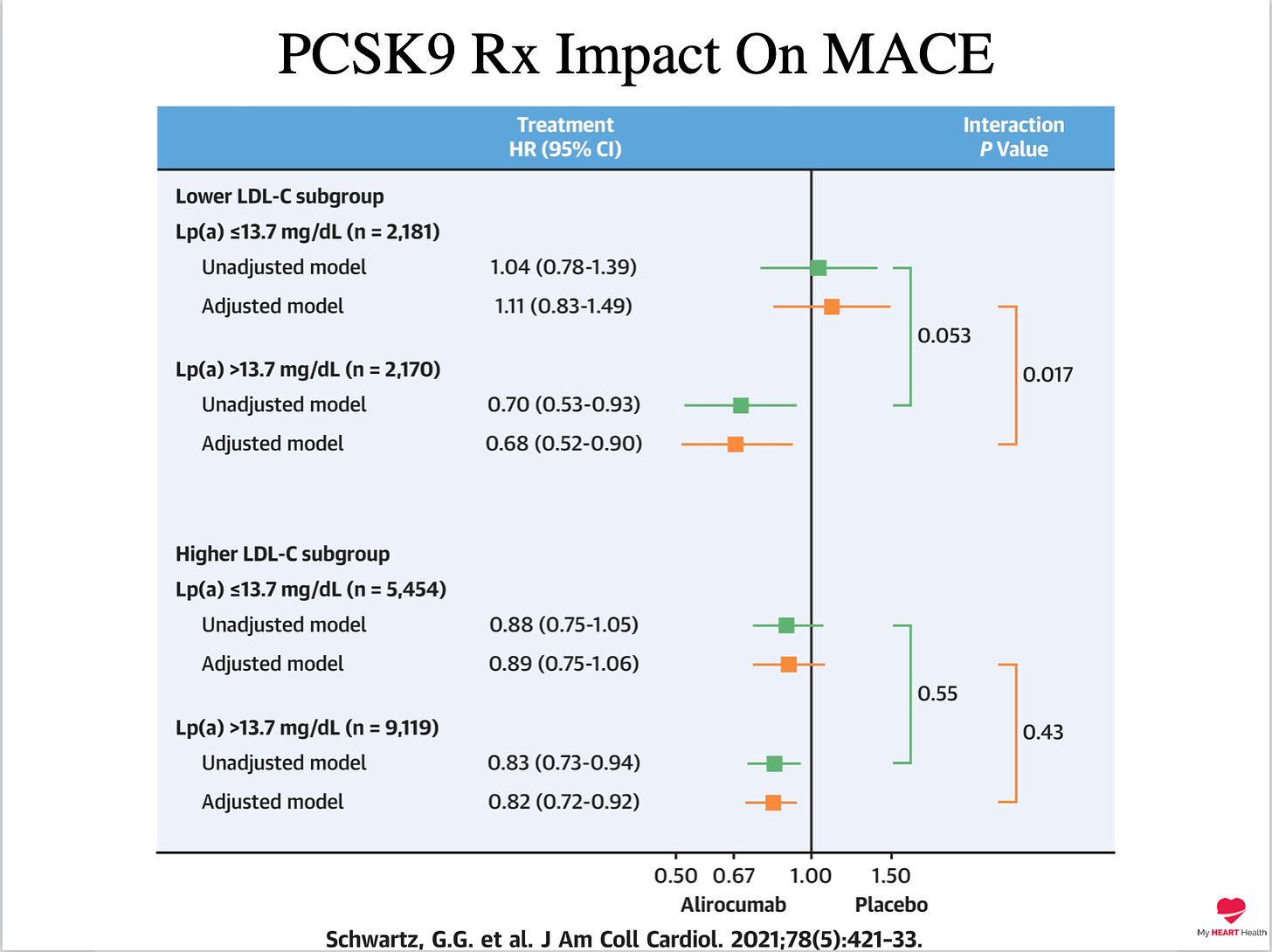
As with any post hoc analysis, we have to view this data as hypothesis-generating only, but it is encouraging nonetheless.
To really make a difference in terms of lowering cardiovascular risk, Lp(a) levels will likely need to be lowered much further.
But we can now do this.
Enter Antisense Oligonucleotide Therapies.
A compound now known as Pelacarsen has been shown to reduce Lp(a) levels by up to 80%.
This highly targeted injectable approach results in a massive reduction of the synthesis of the Apo1 Lp(a) tail with few apparent side effects3.
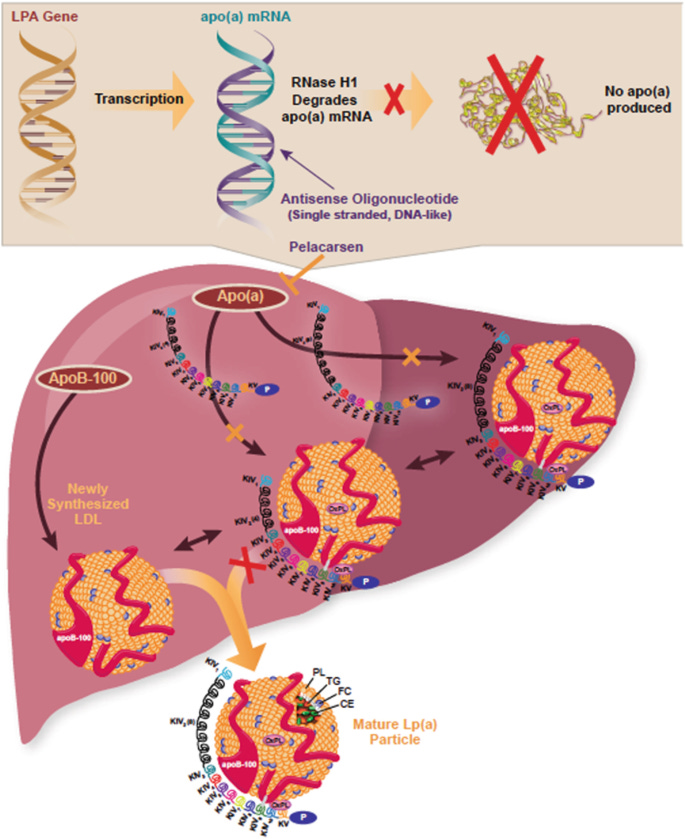
The question is whether such a magnitude of Lp(a) lowering will reduce cardiovascular events in a high-risk population.
This question is currently being tested in a phase 3 trial, the HORIZON trial, looking at those with documented coronary artery disease and very high levels of Lp(a).
The trial is fully enrolled, but results are still likely several years away.
Pelacarsen is not the only therapy in development, however. There are many more therapies looking to leverage different approaches for benefit.
Olpasiran
The OCEAN(a) Dose trial is also a phase 2 trial, this time using a small interfering RNA approach to lowering Lp(a)4.
The most recent trial results showed 100% Lp(a) lowering at some dose ranges with few side effects.
Randomised outcome-based trials will be necessary to assess whether lowering Lp(a) levels with such an approach will translate into meaningful clinical benefits, i.e. fewer heart attacks.
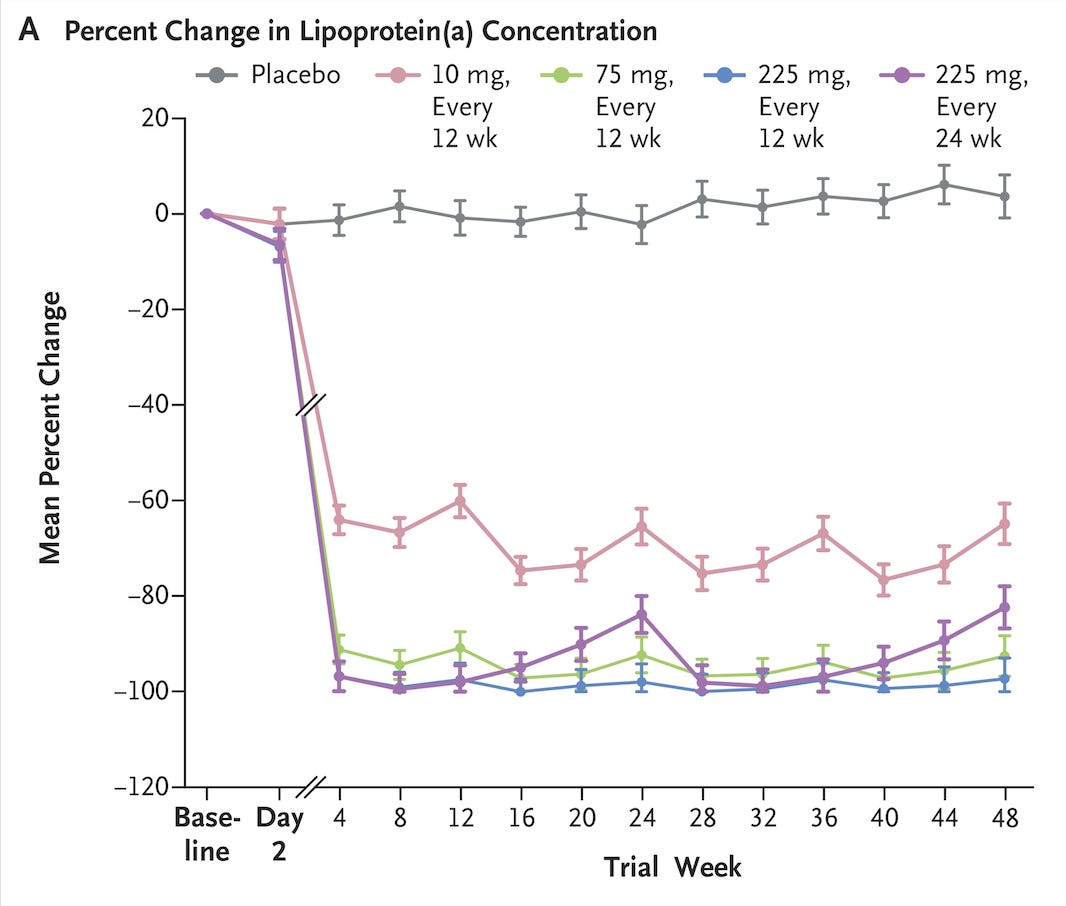
All the therapies listed so far require treatment on either a weekly, biweekly or monthly basis.
siRNA SLN360
SLN360 is another small interfering RNA that has been shown to lower Lp(a) levels by up to 98%.
The difference with this therapy is that it is a single once-off treatment.
While the duration of Lp(a) lowering is still unknown with this approach, additional trials will be required to provide more information on the durability of such a strategy.
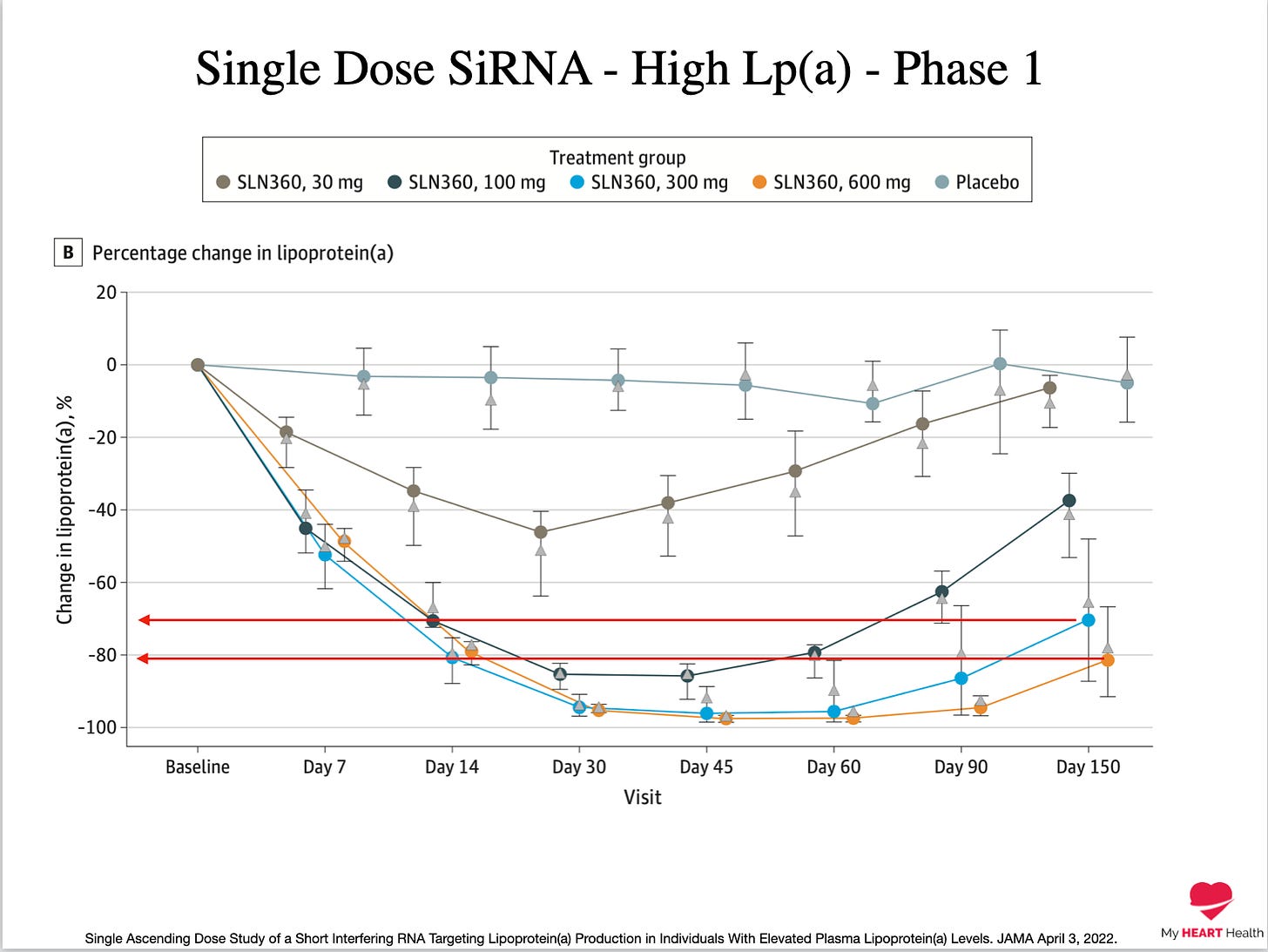
Muvalaplin
Muvalaplin is the first oral Lp(a) lowering therapy.
It is a small molecule that inhibits Lp(a) formation by blocking the apo(a)-apo B100interaction and has shown reductions in Lp(a) of up to 65%5.
Not as much as the other injectable therapies, but still a considerable leap forward using an oral therapy.
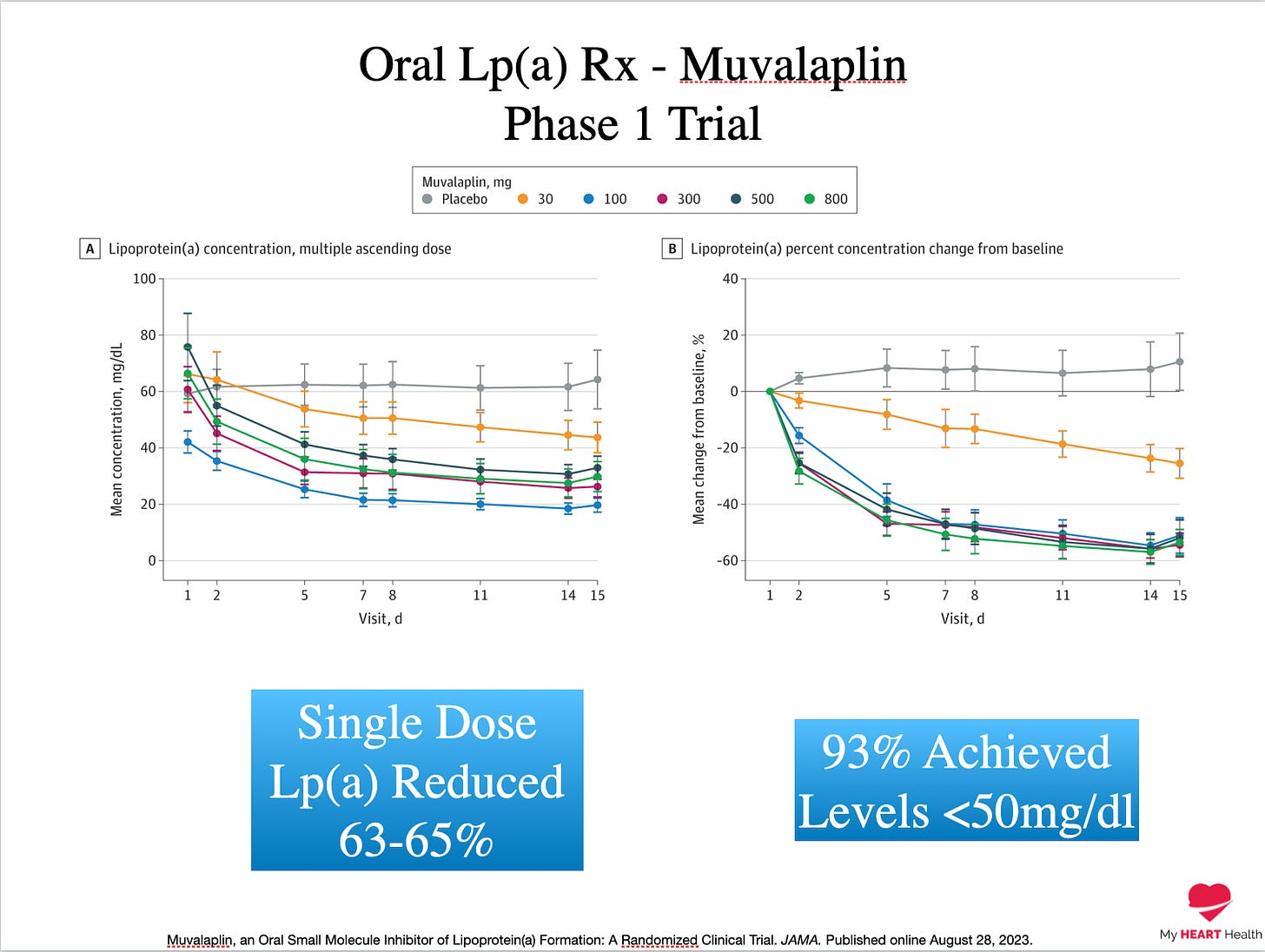
Gene Editing
Elevations in Lp(a) result from mutations in the LPA gene.
But what if those changes could be modified and Lp(a) elevations were treated at the root of the problem?
This gene editing approach may soon be a reality.
Verve Therapeutics is currently developing a once-off gene editing approach to modifying the LPA gene so that high levels of Lp(a) are not produced6.
This is the science fiction future we all once dreamed of and is now in development.
The Future Is Bright For Lp(a) Lowering
There is about a 1 in 5 chance you have an elevated Lp(a) that puts you at higher risk of early heart disease.
If this doesn’t impact you, it almost certainly impacts someone you know and love.
Our options are limited for reducing the excess risk of early cardiovascular disease as a consequence of elevated Lp(a) levels.
However, I must once again stress:
Just because you cannot selectively lower Lp(a) does not mean you cannot reduce overall cardiovascular risk.
But in addition to these efforts, selective Lp(a) lowering will be a game changer for those at the highest risk.
We now have therapies in development for those with an elevated Lp(a) that we could only have dreamt about ten years ago.
We have a lot of shots on goal lined up.
I am confident that at least one will be successful.
ODYSSEY Outcomes Committees and Investigators. Lipoprotein(a) and Benefit of PCSK9 Inhibition in Patients With Nominally Controlled LDL Cholesterol. J Am Coll Cardiol. 2021 Aug 3;78(5):421-433.
ODYSSEY Outcomes Committees and Investigators. Lipoprotein(a) and Benefit of PCSK9 Inhibition in Patients With Nominally Controlled LDL Cholesterol. J Am Coll Cardiol. 2021 Aug 3;78(5):421-433.
Antisense Oligonucleotide Therapy to Treat Elevated Lipoprotein(a). In: Kostner, K., Kostner, G.M., Toth, P.P. (eds) Lipoprotein(a). Contemporary Cardiology. Humana, Cham. https://doi.org/10.1007/978-3-031-24575-6_22
OCEAN(a)-DOSE Trial Investigators. Small Interfering RNA to Reduce Lipoprotein(a) in Cardiovascular Disease. N Engl J Med. 2022 Nov 17;387(20):1855-1864.
Muvalaplin, an Oral Small Molecule Inhibitor of Lipoprotein(a) Formation: A Randomized Clinical Trial. JAMA. Published online August 28, 2023.
https://ir.vervetx.com/news-releases/news-release-details/verve-establishes-global-collaboration-lilly-advance-verves-vivo/




